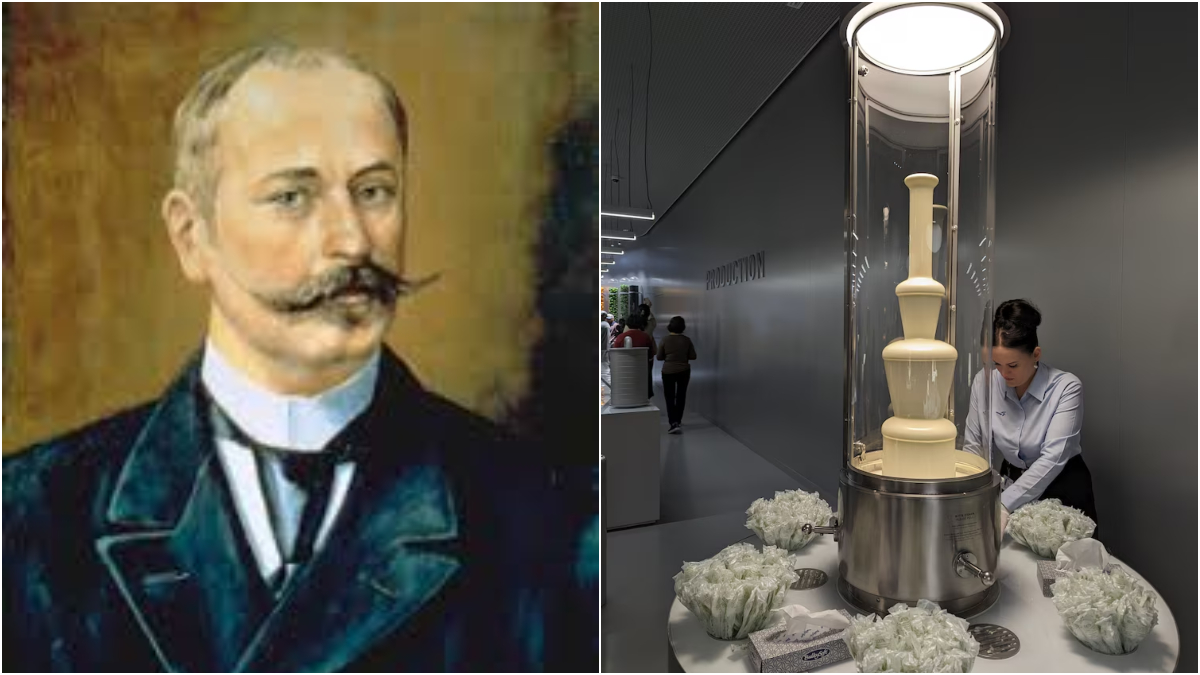The word ‘conche’ and its verb form, conching, trace back to Switzerland’s valleys as a closely guarded secret. This process eventually led to the creation of the beloved melt-in-the-mouth chocolate bars known worldwide.
Rodolphe Lindt kept the process of ‘conching’ to himself for two decades. In 1899, he sold it to chocolate manufacturer Johann Rudolf Sprüngli-Schifferli. Once you’ve managed to pronounce that mouthful of a name, here’s the tale of the chocolate we cherish today.
Cocoa marks the beginning of this tale. In the 4th millennium BC, indigenous peoples in the Ecuadorian rainforests were already captivated by the cocoa bean, marking the early roots of chocolate’s history.
Later, during the 2nd millennium BC in Mexico, the term ‘kakawa’ became significant. The Aztecs cherished their spicy beverage known as ‘Xocolatl’. However, as is often the case with valuable items elsewhere in the world, until Europe ‘discovers’ something, the rest of the world remains unaware of it.
Chocolate Making Skills Spread Across Europe
Fast forward to 1528, when conquistador Hernan Cortes introduced cocoa to Europe. By 1544, people at the Spanish court were savoring chocolate as a beverage after it had reached there.
Centuries later, the cocoa tree was christened by natural scientist Carl von Linne as ‘Theobroma Cacao L.’. Theobroma translates to ‘food of the gods’ in Greek. Since then, this divine creation has enjoyed uninterrupted admiration.
Switzerland was still centuries away from discovering their passion for chocolate production.
Also Read: Summer Warning: Risks Associated with Excessive Cold Coffee Consumption!
Over a hundred years after Linne coined the term for cocoa, Italian ‘cioccolatieri,’ traveling craftsmen, showcased their chocolate-making skills at fairs frequented by people from across Europe to learn this art. It’s preparation was a challenging process that demanded skill and patience.
Francois-Louis Cailler, who founded Switzerland’s first chocolate factory in Corsier-sur-Vevey in 1819, was among the earliest Swiss chocolate masters. Cailler remains the oldest active chocolate brand globally today. However, the advent of Choco bars was still on the horizon.
Rodolphe Lindt’s Invention
Switzerland, abundant with milk, naturally became the next step in the evolution of chocolate making. In 1875, Daniel Peter achieved a breakthrough by stabilizing milk and chocolate, creating a stable emulsion through the mixture of condensed milk and cocoa butter.
In the 1870s in Bern, Rodolphe Lindt invented a roller machine to achieve the ideal melt-in-the-mouth texture of milk chocolate. While testing it, his brother, an apothecary, suggested heating the roller, adding more cocoa butter, and extending the machine’s running time.
After Lindt left the roller running for three days and nights during a hunting trip, he returned to find a dark, velvety mixture with a silky-smooth texture—an unexpected Eureka moment.
Lindt named this creation ‘chocolate fondant’, or melting choco. The roller, dubbed ‘conche’ (from the Spanish word ‘concha’ meaning shell), led to the process known as ‘conching’.
The introduction of the conche revolutionized the industry, propelling Switzerland to become the world’s leading exporter of chocolate by 1912, with a dominant 55% share of the global market.
Also Read: Man Has 165 Kids, Tries To Meet All, Still Finding Love On Dating Apps












